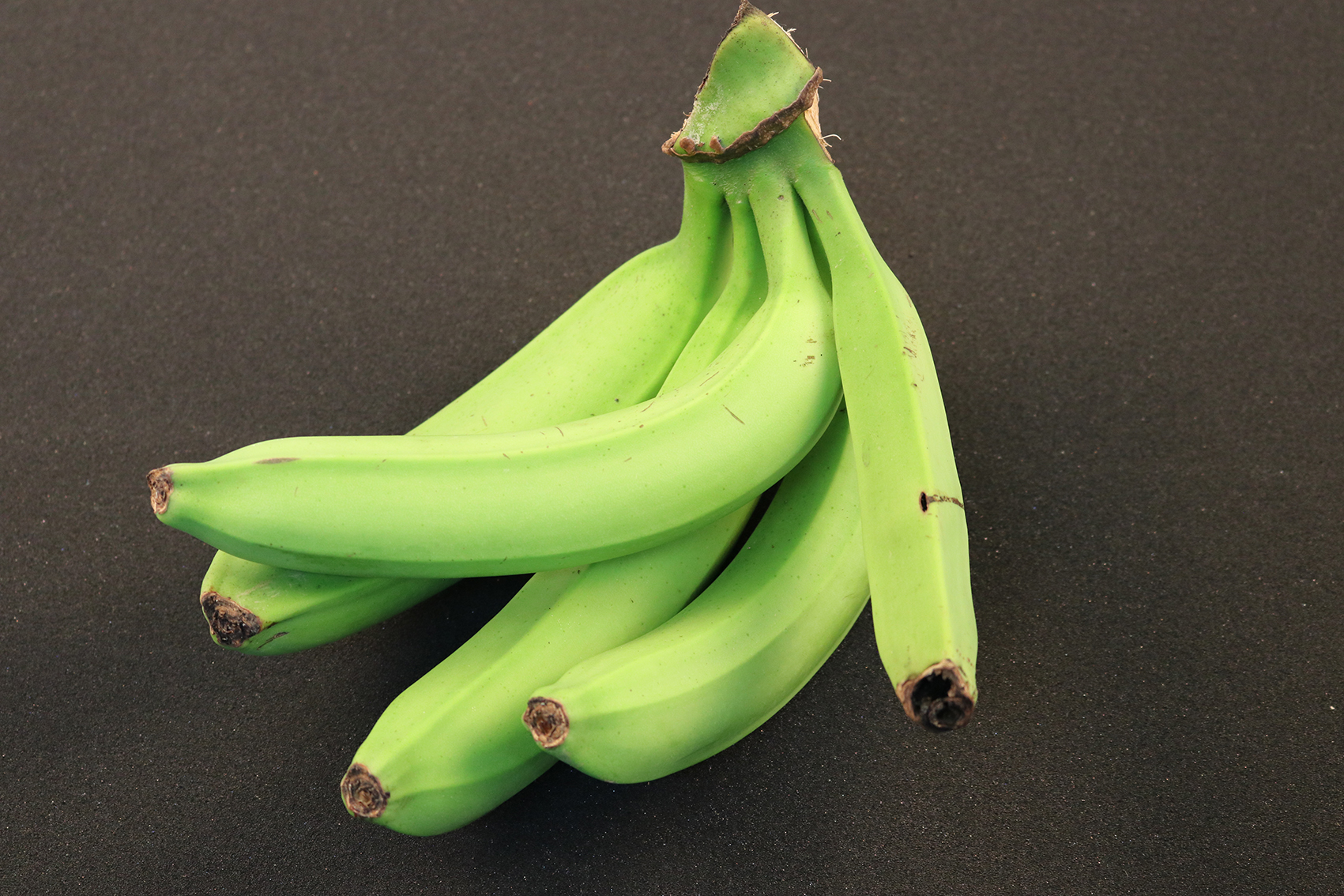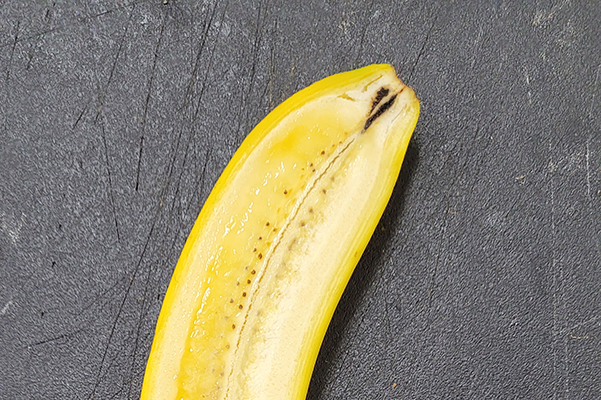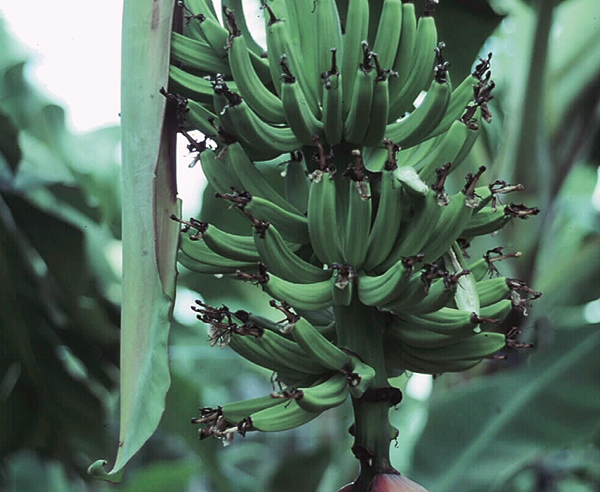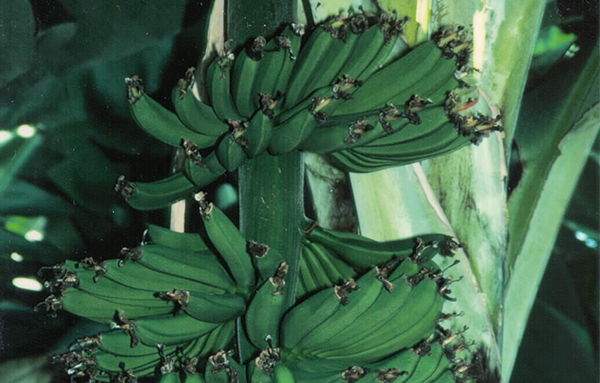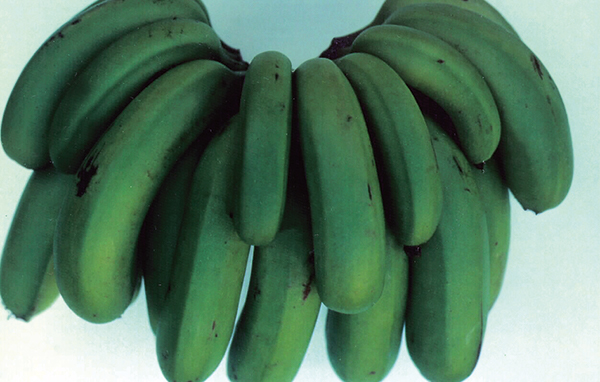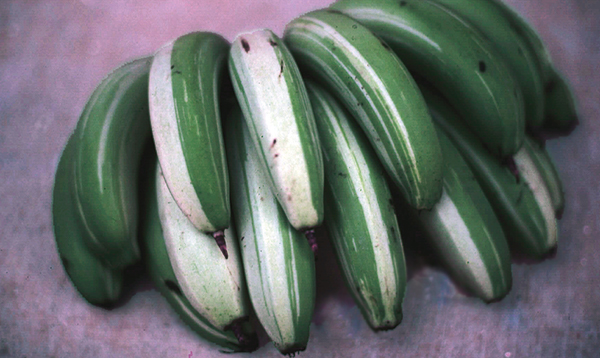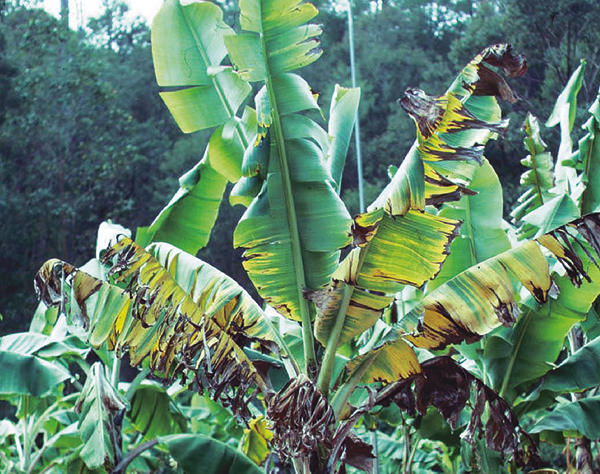Tattered or holey leaves
Posted on by Better Bananas
Tattered or holey leaves
Greyback cane beetle
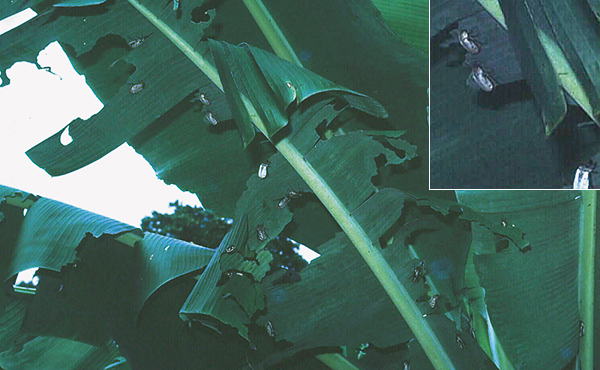
Cause: Feeding by adults of Dermolepida albohirtum. Damage is seldom severe, but extensive feeding on older leaves of bunched plants can lead to sunburnt fruit.
Solution: There are no recommended foliar chemical treatments as these will interfere with biological control and will result in serious mite infestation. This will be more damaging and costly than greyback cane beetle damage.
Swarming leaf beetles
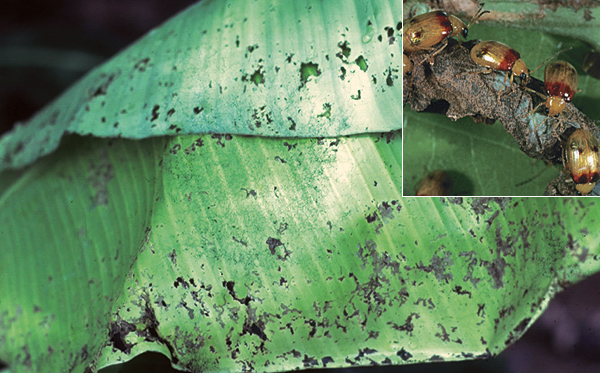
Cause: Leaf feeding of large numbers of adult Monolepta australis or Rhyparida spp. beetles. They swarm in spring and summer.
Solution: Damage is sporadic and no specific treatment is required.
Cluster caterpillar
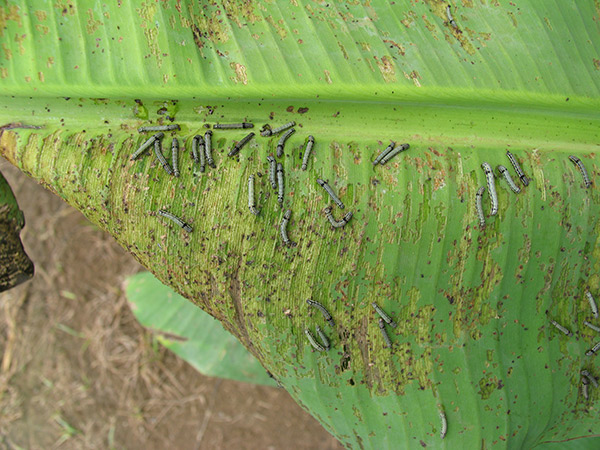
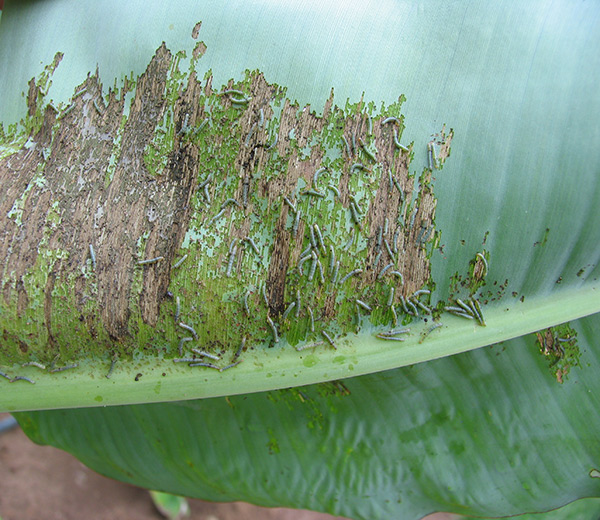
Cause: Young larvae of Spodoptera litura feeding in groups on either the top or bottom of leaves, leaving the opposite side intact. Large larvae are solitary.
Solution: Damage is sporadic and most often concentrated on the tender leaves of plant crops. Fruit damage is usually restricted to a few isolated bunches and seldom requires specific treatment.
Banana skipper
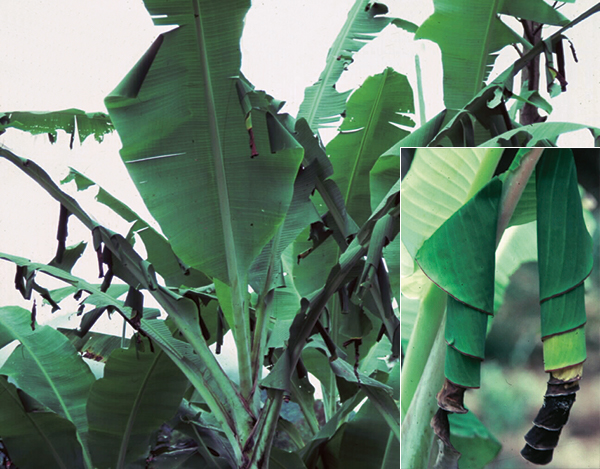
Biosecurity Alert
Cause: Larvae of Erionota thrax feed on the leaf blade and strip and roll it to form a shelter in which the larva develops. In heavy infestations, the entire leaf lamina is destroyed, leaving only the midrib.
Biosecurity: This leaf pest has not been found in Australia or Torres Strait Islands but is well established in Papua New Guinea. It is widely distributed throughout China, India, South East Asia, Mauritius and Hawaii. Report all suspicious outbreaks to Biosecurity Queensland immediately (13 25 23).
Grasshopper
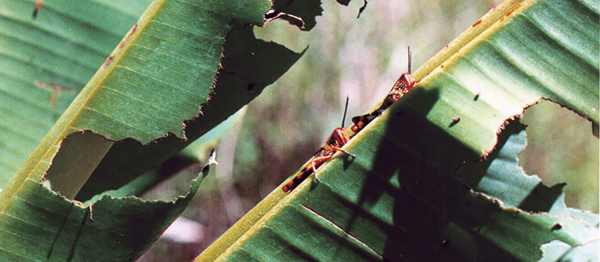
Cause: Feeding by grasshoppers Valanga spp.
Solution: The damage is mostly cosmetic as plants will rapidly compensate for any leaf loss. It is usually only a problem on young plants, especially on new plant crops. No treatment is required.
Wind
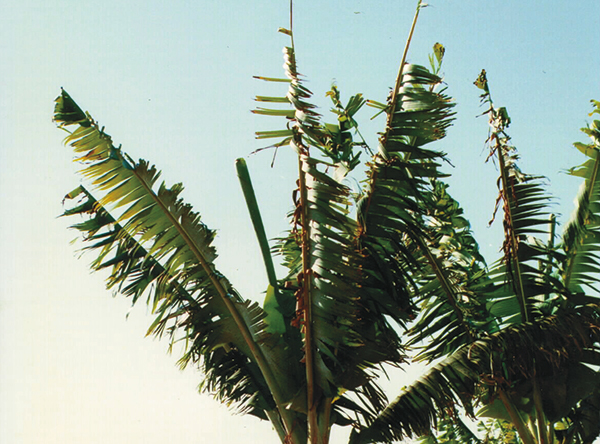
Cause: Strong winds tearing the leaf lamina.
Solution: Retaining existing vegetation or planting specific windbreak trees can reduce the damage caused by strong winds.
Discoloured leaf petioles
Posted on by Better Bananas
Discoloured leaf petioles
Banana bunchy top
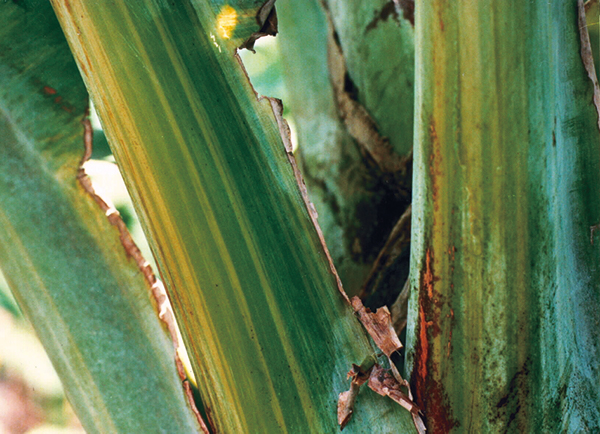
Biosecurity Alert
Cause: The banana bunchy top virus (BBTV) which is spread on infected planting material and by the banana aphid, Pentalonia nigronervosa. BBTV is not present in tropical Australia, and movement of planting material is controlled by legislation.
Solution: There is no cure for this disease and all infected plants must be eradicated.
Biosecurity: Under state legislation, banana bunchy top disease must be reported. If you have seen plants with banana bunchy top symptoms within the Southern Queensland banana biosecurity zone, or the NSW Banana Bunchy Top Virus Control Zone contact the Banana Bunchy Top Hotline on 1800 068 371.
If you have seen banana bunchy top outside of these areas, you must report it within 24 hours to the Biosecurity authority in your state (Biosecurity Queensland on 13 25 23, or NSW DPI Biosecurity Hotline 1800 680 244) or the Exotic Plant Pest Hotline on 1800 084 881.
More Info:
Better Bananas
Australian Banana Growers Council
Department of Primary Industries
NSW Department of Primary Industries and Regional Development
Plant Health Australia
Banana streak virus
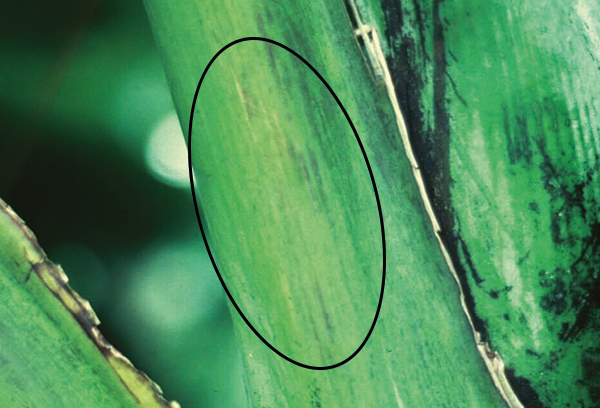
Cause: The banana streak virus (BSV).
Solution: Do not take planting material from infected plants. Eradicate infected plants where symptoms are observed.
Nitrogen deficiency
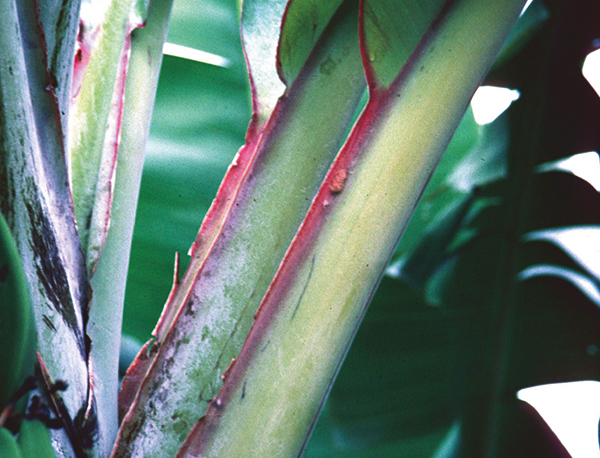
Cause: Insufficient nitrogen available for the plant due to inadequate fertiliser applications or leaching and gaseous loss of the nitrogen fertiliser applied.
Solution: Appropriate application of nitrogen fertiliser. You need to know your soil type, climate, past fertiliser program, and soil and leaf analysis results when determining the fertiliser rate.
Yellow leaves
Posted on by Better Bananas
Yellow leaves
Bacterial corm rot
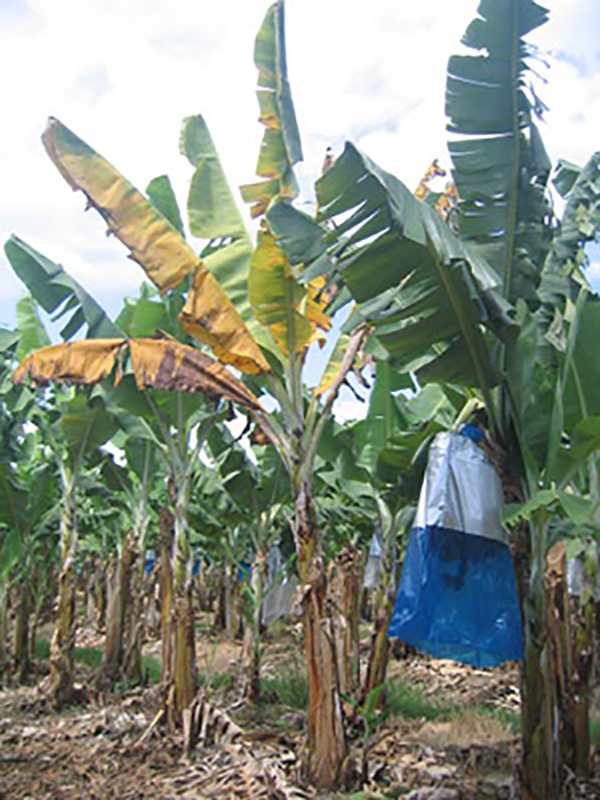
Cause: The bacteria Pectobacterium spp. (formerly known as Erwinia spp.) which are widespread in most soils. Plants that are stressed from heat or lack of water during the dry season can succumb to bacterial invasion during the early part of the wet season.
Solution: There is no cure for infected plants. Avoid stress conditions. Ensure adequate moisture levels are maintained during the dry season.
Banana bunchy top
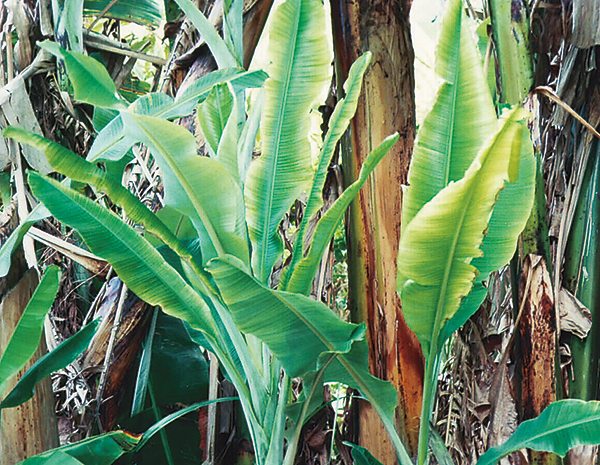
Biosecurity Alert
Cause: The banana bunchy top virus (BBTV) which is spread on infected planting material and by the banana aphid (Pentalonia nigronervosa). BBTV is not present in tropical Australia, and movement of planting material is controlled by legislation.
Solution: There is no cure for this disease and all infected plants must be eradicated.
Biosecurity: Under state legislation, banana bunchy top disease must be reported. If you have seen plants with banana bunchy top symptoms within the Southern Queensland banana biosecurity zone, or the NSW Banana Bunchy Top Virus Control Zone contact the Banana Bunchy Top Hotline on 1800 068 371.
If you have seen banana bunchy top outside of these areas, you must report it within 24 hours to the Biosecurity authority in your state (Biosecurity Queensland on 13 25 23, or NSW DPI Biosecurity Hotline 1800 680 244) or the Exotic Plant Pest Hotline on 1800 084 881.
More info:
Better Bananas
Australian Banana Growers’ Council
Queensland Department of Primary Industries
New South Wales Department of Primary Industries and Regional Development
Plant Health Australia
Magnesium deficiency
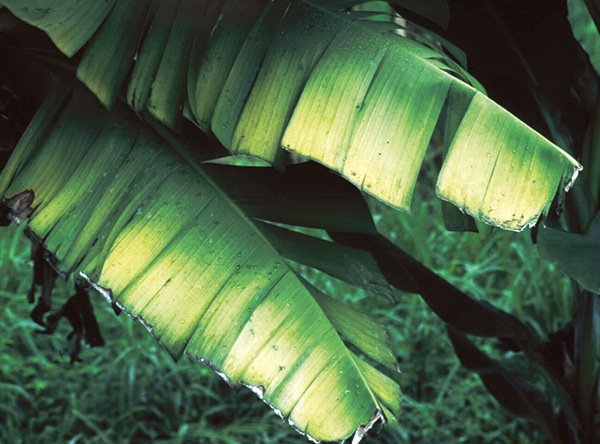
Cause: Reduced availability of magnesium for plant update. Usually due to inappropriate fertilisation causing an imbalance.
Solution: Appropriate application of magnesium fertiliser. Knowledge of your soil type, climate, past fertiliser program, and soil and leaf analyses all need to be considered in determining fertiliser rate.
Nitrogen deficiency
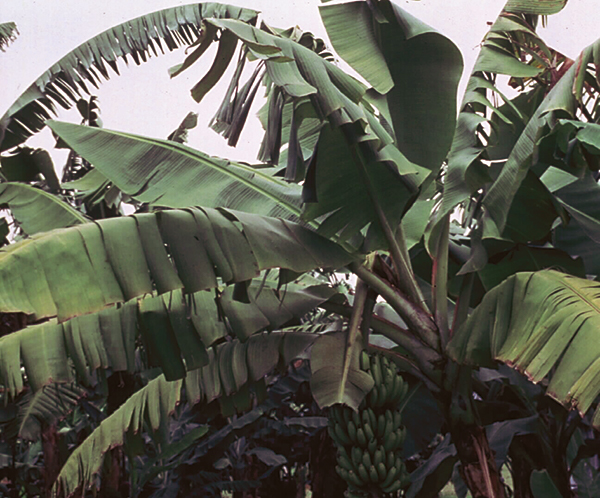
Cause: Insufficient nitrogen available for the plant due to inadequate fertiliser applications or leaching and gaseous loss of the nitrogen fertiliser applied.
Solution: Appropriate application of nitrogen fertiliser. You need to know your soil type, climate, past fertiliser program, and soil and leaf analysis results when determining the fertiliser rate.
Panama disease (Fusarium wilt)
Biosecurity Alert
Cause: The fungus Fusarium oxysporum f. sp. cubense which is a soil-borne organism. It is spread in water, soil and planting material. It enters the plant through the roots, and blocks the conducting tissue within the plant resulting in wilting, yellowing of leaves, splitting of pseudostem and death of the plant.
Solution: There is no cure for affected plants. Use only approved planting material and do not plant in previously infested areas.
Biosecurity obligation: Panama is a notifiable disease and you must report any suspicious plants. If you suspect Panama disease you must notify Biosecurity Queensland immediately (13 25 23).
More info:
Queensland Department of Primary Industries
Grower Support Biosecurity(Grower kit)
Plant Health Australia
More images
Potassium deficiency
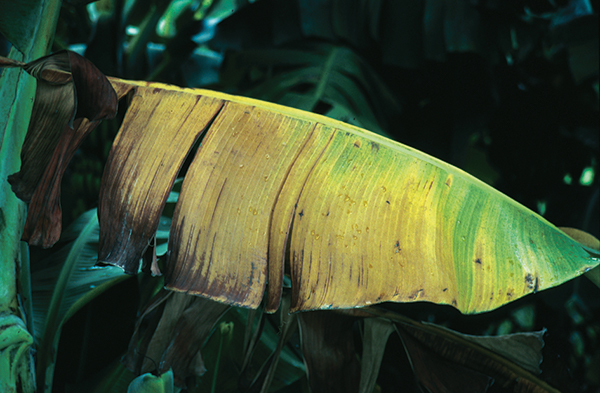
Cause: Reduced availability of potassium for plant uptake. Enhanced by leaching losses of potassium and/or inappropriate fertilisation.
Solution: Appropriate application of potassium fertiliser. Knowledge of your soil type, climate, past fertiliser program, and soil and leaf analyses need to be considered in determining fertiliser rate.
Water-logging
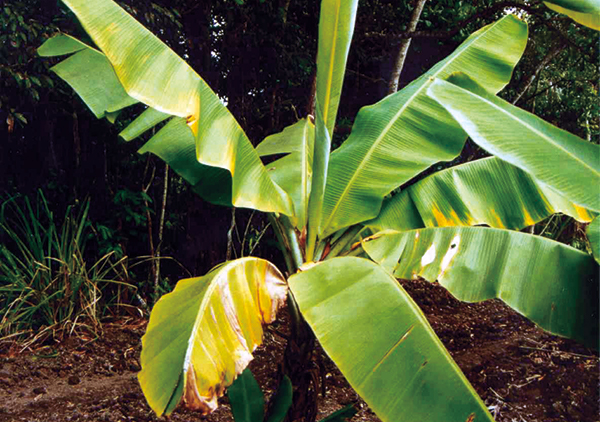
Cause: Poor soil aeration which reduces root function and leads to water and nutrient stress.
Solution: Depends on soil type and situation but usually involves surface and subsurface drainage works.
Spots on leaves
Posted on by Better Bananas
Spots on leaves
Banana freckle
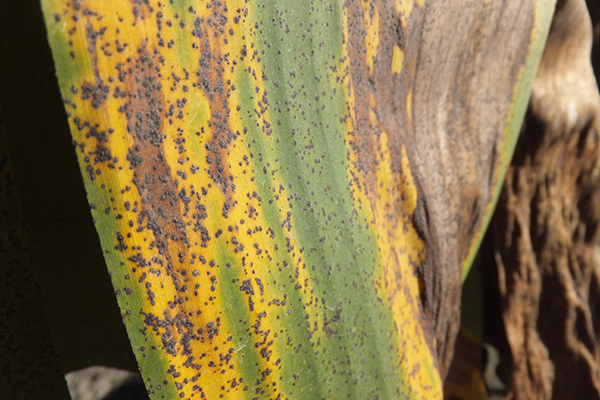
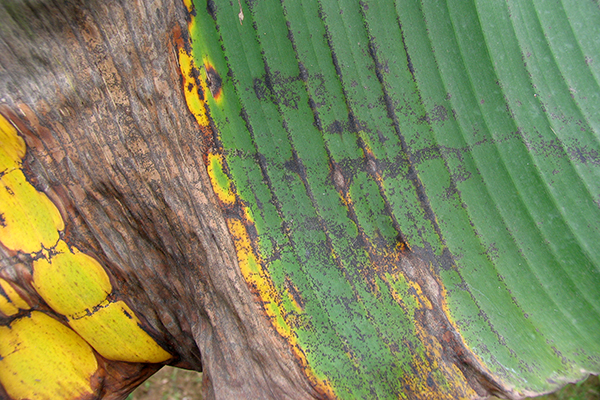
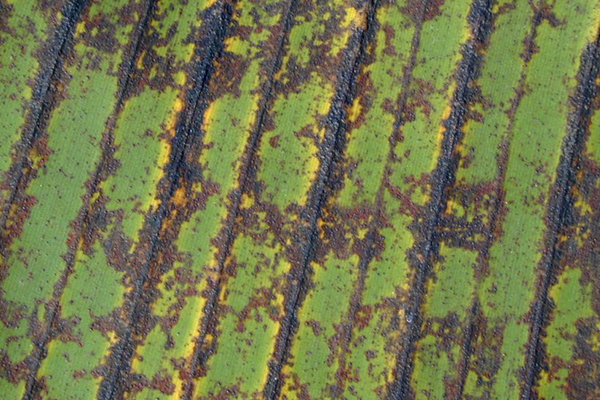
Biosecurity Alert
Cause: Banana freckle is a leaf and fruit spotting disease of banana and is caused by several species of the fungus Phyllosticta, some of which are exotic to Australia. The disease that affects Cavendish bananas is caused by the race Phyllosticta cavendishii, with the first incursion detected in Australia’s Northern Territory in 2013. This race can also affect non-Cavendish varieties.
Symptoms: The most distinguishing symptom of the disease are dark raised spots, and a sandpaper feel to infected (spotted) leaves and fruit. On fruit, individual spots first appear as minute, reddish-brown flecks surrounded by a halo of dark-green, water-soaked tissue.
Biosecurity: Both commercial and backyard banana growers should regularly monitor their banana plants for symptoms of the disease. If you see symptoms or anything unusual call Biosecurity Queensland on 13 25 23 or the Exotic Plant Pest Hotline on 1800 084 881 immediately.
Movement restrictions are in place to stop the movement of plants, plant material and fruit from infected or suspect premises. Further, Queensland, New South Wales and Western Australia prohibit the entry of banana fruit and plant material from the Northern Territory, with quarantine checkpoints at some state borders.
More info:
Plant Health Australia
Queensland Government
Northern Territory Government
Australian Government
ABGC
Symptoms of banana freckle on banana fruit (Better Bananas)
Banana rust
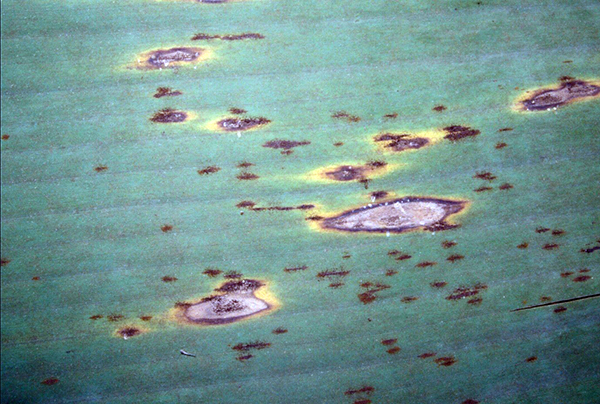
Cause: The fungus Uredo musae. A disease with limited distribution, it is seen within plantations near tree lines and buildings which reduce spray coverage. Banana rust occurs predominantly on older leaves. Therefore fungicide applications should be applied via ground rig.
Solution: The leaf spot program should provide adequate management of rust.
Black Sigatoka
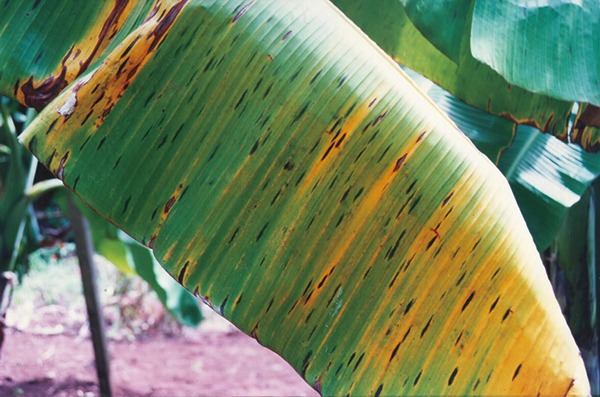
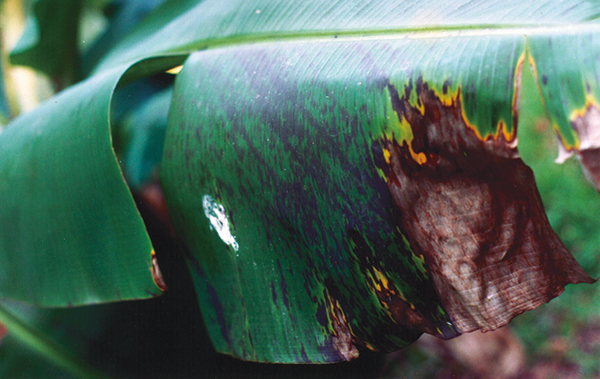
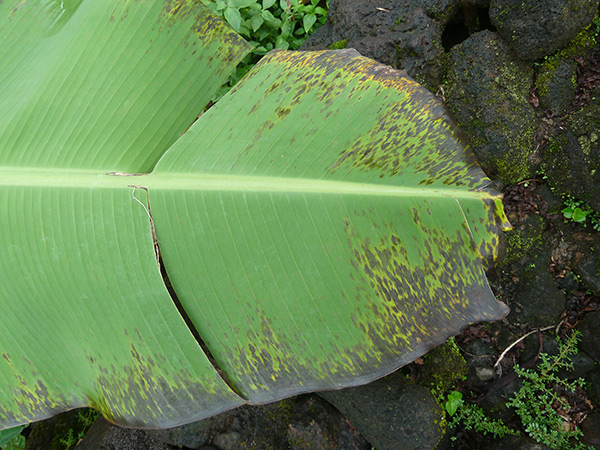
Biosecurity Alert
Cause: The fungus Pseudocercospora fijiensis (formerly known as Mycosphaerella fijiensis). In the early stages of development, black Sigatoka appears as rusty red streaks up to 5 to 15mm. These symptoms are more obvious on the underside of leaves. Streaks enlarge over time to become spots.
Solution: If you suspect black Sigatoka you must notify Biosecurity Queensland immediately (13 25 23). It is a notifiable disease and you must report any suspicious plants.
Biosecurity: Importation of all banana material (fruit, leaves, planting material) is prohibited without approval. A biological barrier is now established, reducing the number of susceptible bananas between the Torres Strait/Papua New Guinea, where the disease exists and the Far North Queensland banana production areas.
More info:
Queensland Department of Primary Industries
Plant Health Australia
New South Wales Department of Primary Industries and Regional Development
Cordana leaf spot
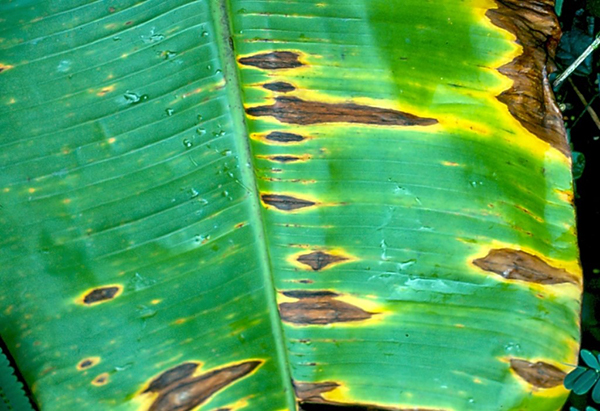
Cause: The fungus Neocordana musae. Large numbers of spores produced on the underside of lesions are spread during wet windy weather. The fungus mainly enters the leaf through injuries. It is common on plants weakened as a result of water-logging or drought.
Solution: The leaf spot program provides adequate management of cordana leaf spot.
Herbicide drift
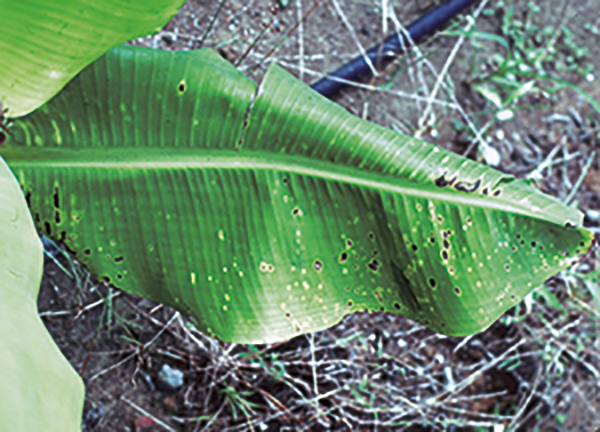
Cause: Spray drift of contact herbicides such as paraquat onto the plant.
Solution: Avoid spray drift onto leaves. Affected plants should grow out of the symptoms.
Leaf speckle
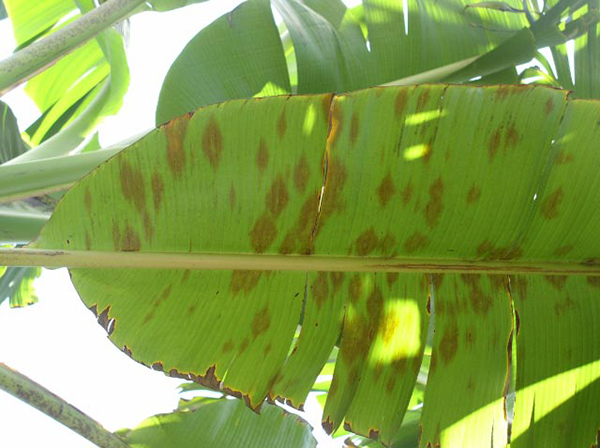
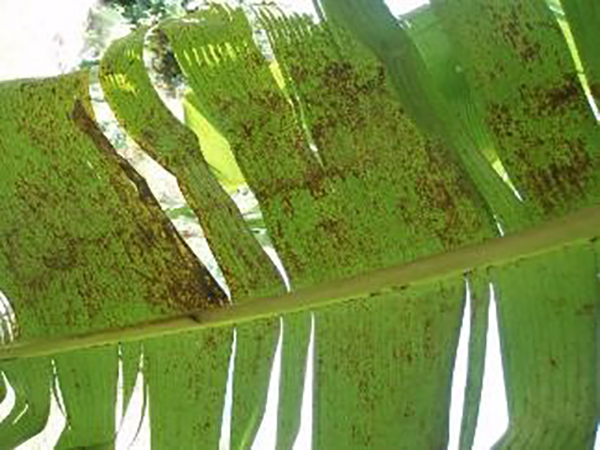
Cause: Several fungi including Mycosphaerella musae (banana leaf speckle or common speckle), and Ramichloridium spp. (tropical leaf speckle) can produce a range of symptoms. These fungi are spread by wind in moist weather and are more tolerant of cool conditions than the leaf spot fungus.
Solution: The leaf spot management program normally provides control of speckle. If better control is needed, apply fungicides by ground rig which targets the underside of leaves.
Leaf spot (yellow Sigatoka)
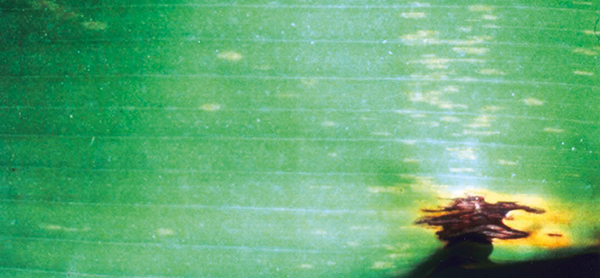
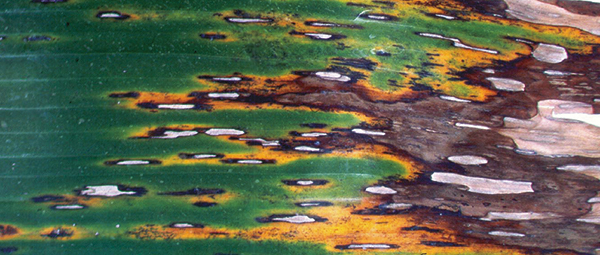
Cause: The fungus Pseudocercospora musae (formerly known as Mycosphaerella musicola). Early stages of development appears as light yellow streaks 1 to 2 mm long. Streaks enlarge in time to become spots.
Solution: Ensure the leaf spot management program is carried out effectively. The program should include cultural (deleafing, drainage) and chemical (fungicides, oils, application timing, coverage) practices.
More info:
Better bananas – yellow Sigatoka general information factsheet
Better Bananas – yellow Sigatoka fungicide options factsheet
Mite damage
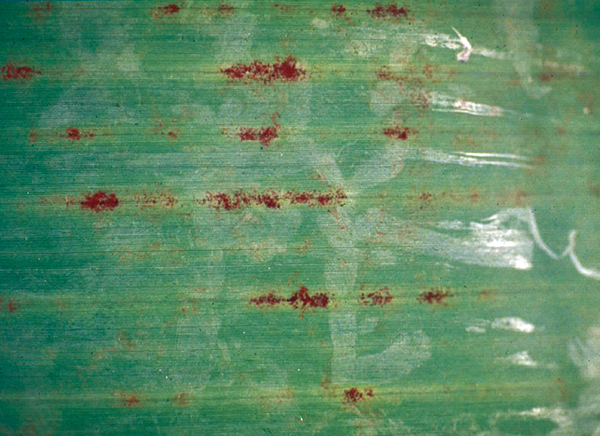
Cause: Feeding by the banana spider mite, Tetranychus lambi, or the two-spotted mite, Tetranychus urticae, causes tissue to die, resulting in bronzed areas under leaves.
Solution: Treatment is usually not necessary because predatory beetles Stethorus spp. maintain adequate natural control. If these beetles are not present and monitoring results show the level of damage is severe, treat with an appropriate miticide. Ensure adequate coverage to the underside of leaves.
More info:
Queensland Department of Primary Industries
Southern cordana leaf spot
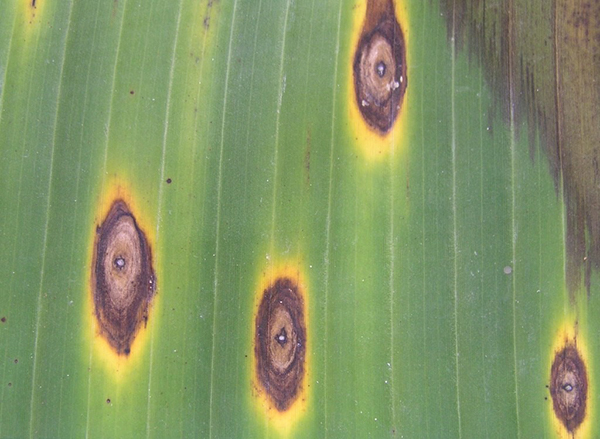
Cause: The fungus Cordana johnstonii. This disease is present in the tropics and distribution is limited. It is frequently seen on unsprayed Ducasse plants, and in areas of high elevation under cooler weather conditions. Lesion size is significantly smaller than Cordana musae, approximately 10 by 15 mm. As with Cordana musae, spores form abundantly on the underside of leaves on mature lesions.
Solution: The leaf spot control program should manage this disease.
Spiralling whitefly
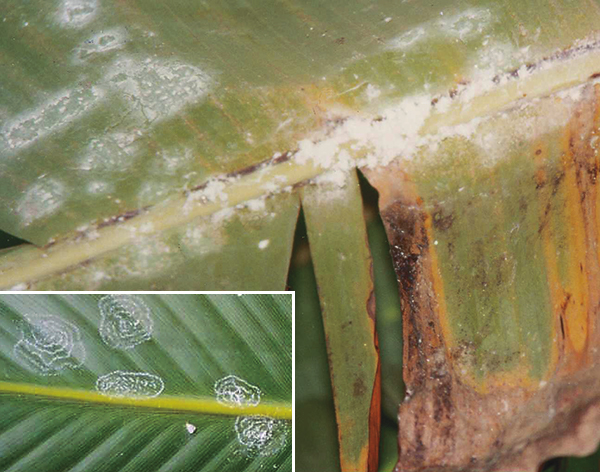
Biosecurity Alert
Cause: The insect spiralling whitefly (Aleurodicus dispersus). The white adults and nymphs occur on the underside of the leaf. The name comes from the white trail in which the eggs are laid. Its sap-sucking reduces vigour, and the production of honeydew supports the growth of sooty mould which can cover fruit and leaves.
Biosecurity: Report all suspicious symptoms immediately to Biosecurity Queensland (13 25 23).
More info:
Transparent scale
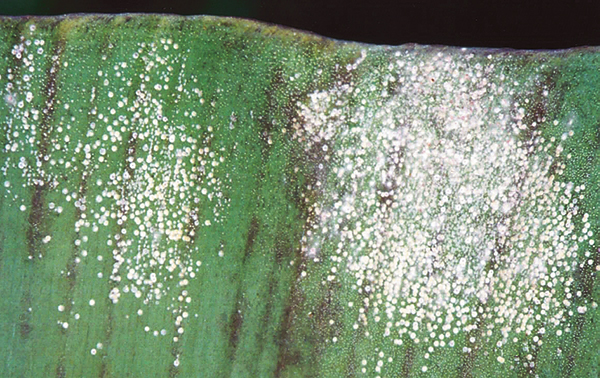
Cause: The scale insect Aspidiotus destructor sucking nutrients from the leaf cells.
Solution: Natural predation by beetles, parasitism by wasps and oil sprays used for leaf spot help to suppress scale. For small outbreaks, cut off affected leaves. Avoid the use of foliar sprays that will interfere with natural control agents. Specific insecticide treatments are not recommended or required.
Curled or distorted leaves
Posted on by Better Bananas
Curled or distorted leaves
2,4-D damage
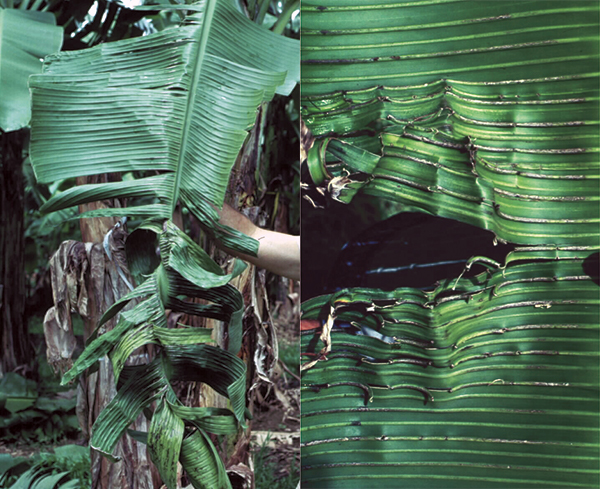
Cause: Spray drift of 2,4-D onto green parts of the plant.
Solution: Take efforts to avoid spray drift onto leaves. Plants should grow out of it.
Banana streak virus
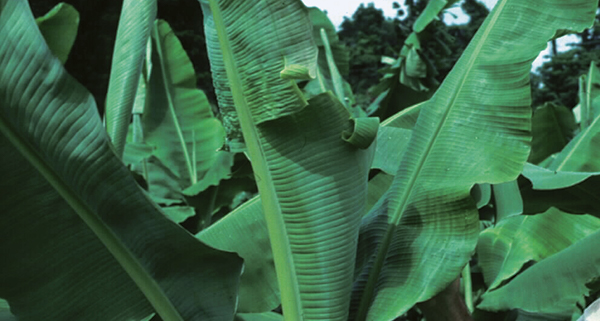
Cause: The banana streak virus (BSV). The streaks or flecks on leaves become progressively darker with age and the leaves may die. Symptom expression is sporadic. Symptoms of cucumber mosaic are similar.
Solution: Do not take planting material from infected plants. Eradicate infected plants where symptoms are observed.
Spike leaf
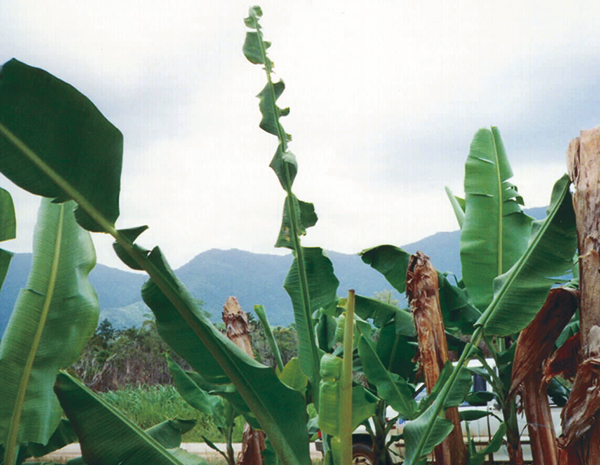
Cause: A temporary shortage of calcium caused by rapid growth. Most common in spring and early summer.
Solution: Avoid sudden bursts of growth by using regular, light fertiliser applications. A foliar application of calcium nitrate at 10 g/L in early spring will reduce the problem.
Tissue-cultured off-type
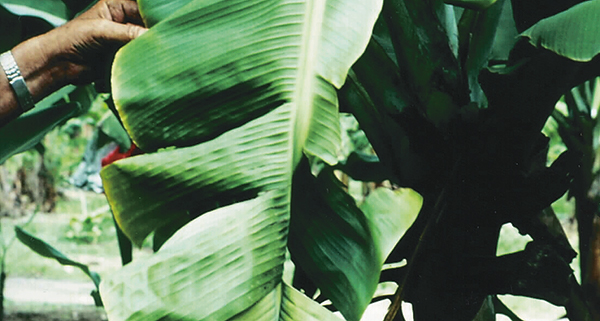
Cause: A genetic abnormality that occurs in tissue-cultured plants.
Solution: Destroy affected plants and set additional following suckers on nearby plants.
Leaves with dead edges or patches
Posted on by Better Bananas
Leaves with dead edges or patches
Herbicide damage
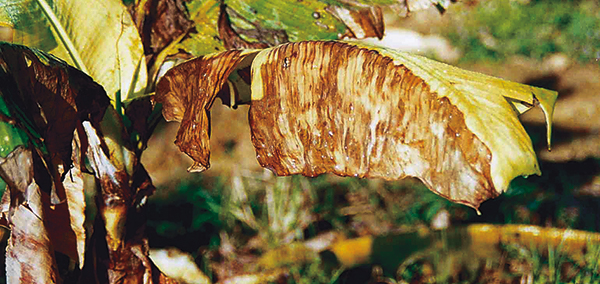
Cause: Spray drift of contact herbicides such as paraquat onto the plant.
Solution: Avoid spray drift onto leaves. Affected plants should grow out of the symptoms.
Manganese toxicity (dead patches)
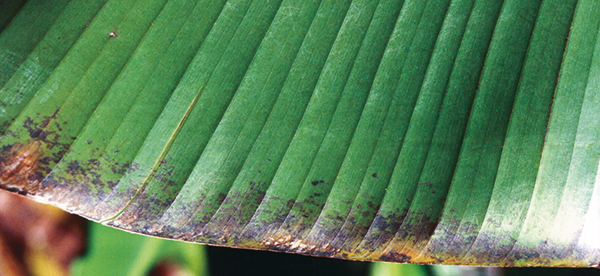
Cause: Excess manganese in the plant due to the presence of manganese nodules in the soil profile and water-logging.
Solution: Confirm the diagnosis with a leaf analysis. Improve soil drainage and soil structure. Avoid planting bananas in poorly drained soils.
Mites (dead edges)
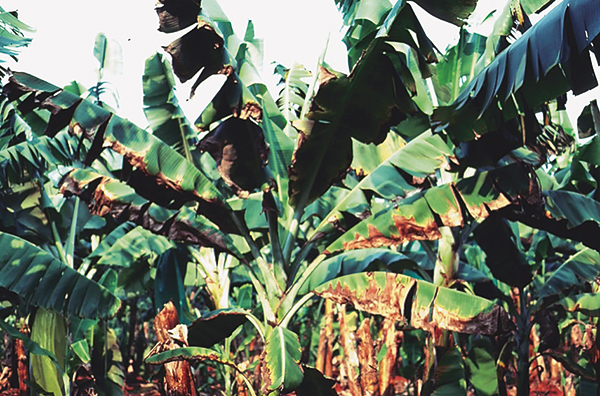
Cause: Feeding of the banana spider mite Tetranychus lambi, or the two-spotted mite, Tetranychus urticae on the underside of leaves. Severe outbreaks are usually the result of poor insecticide management which has destroyed beneficial insects.
Solution: Treat with an appropriate miticide. Ensure adequate coverage to the underside of the leaves.
More info:
Better Bananas – Mite summary
Queensland Department of Primary Industries
Plant Health Australia
Salt toxicity (dead edges)
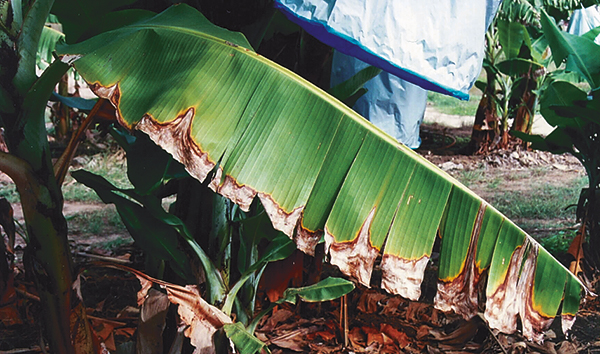
Cause: A build-up of salt in the plant from high soil or water salinity.
Solution: Confirm the diagnosis with tissue or water analysis. Water heavily to leach salt out of the root zone. Seek alternative sources of water. Avoid excessive applications of fertilisers containing chloride.
Water stress (dead patches)
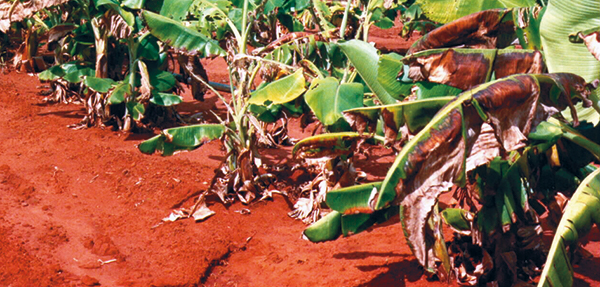
Cause: Severe water stress during hot, dry periods.
Solution: Apply more water during periods of high demand. Water scheduling devices help to plan irrigation.
Streaks on leaves
Posted on by Better Bananas
Streaks on leaves
Banana bunchy top
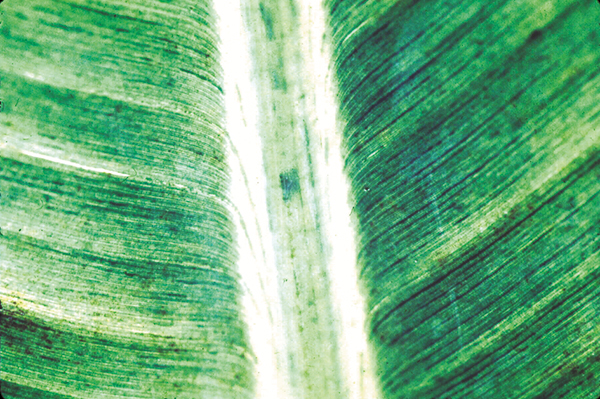
Cause: The banana bunchy top virus (BBTV) which is spread in infected planting material and by the banana aphid, Pentalonia nigronervosa. BBTV is not present in tropical Australia, and movement of planting material is controlled by legislation.
Solution: There is no cure for this disease and all infected plants must be eradicated.
Biosecurity: Under state legislation, banana bunchy top disease must be reported. If you have seen plants with banana bunchy top symptoms within the Southern Queensland banana biosecurity zone, or the NSW Banana Bunchy Top Virus Control Zone contact the Banana Bunchy Top Hotline on 1800 068 371.
If you have seen banana bunchy top outside of these areas, you must report it within 24 hours to the Biosecurity authority in your state (Biosecurity Queensland on 13 25 23, or NSW DPI Biosecurity Hotline 1800 680 244) or the Exotic Plant Pest Hotline on 1800 084 881.
More info:
Better Bananas
Australian Banana Growers Council
Queensland Department of Primary Industries
Plant Health Australia
New South Wales Department of Primary Industries and Regional Development
Banana streak virus
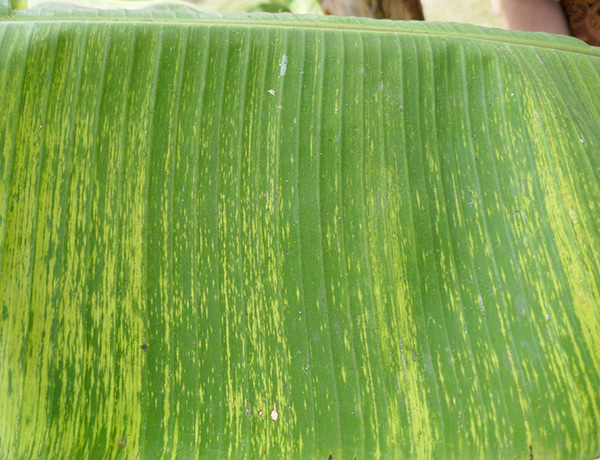
Cause: The banana streak virus (BSV). The pale streaks or flecks on the leaves become darker with age. Symptoms of cucumber mosaic virus are similar.
Solution: Eradicate infected plants and set additional following suckers on neighbouring plants. Do not take planting material from infected plants.
Chlorotic patching
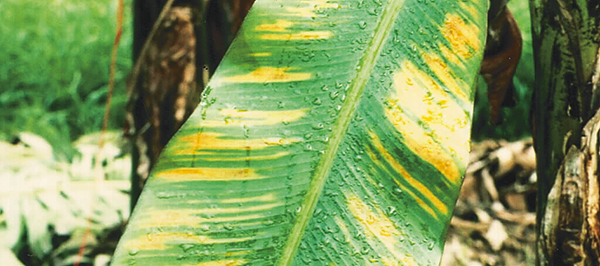
Cause: A physiological disorder that indicates the plant is suffering stress. It usually occurs in spring and can be related to water-logging.
Solution: Determine the exact cause of plant stress. Check for corm or root damage from banana weevil borer or nematodes.
Cucumber mosaic virus
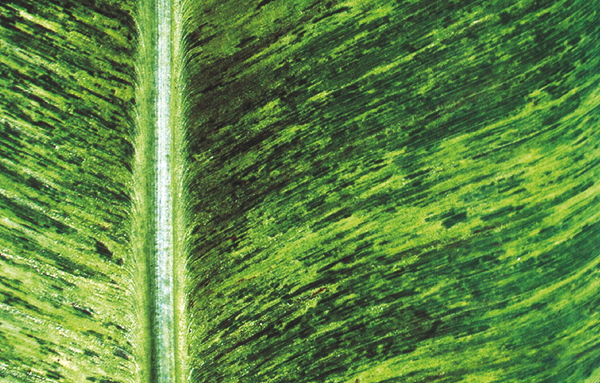
Cause: Cucumber mosaic virus (CMV). This virus has a wide host range and can be spread to bananas by aphids.
Solution: Disease incidence is sporadic and generally low. Control measures are not warranted. Do not take planting material from infected plants.
October to November streak
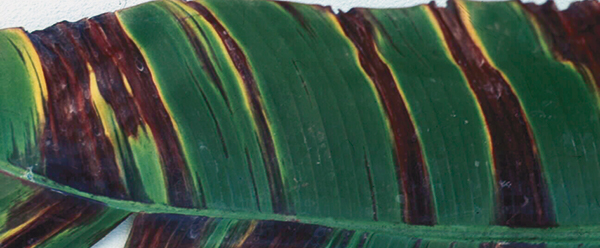
Cause: A physiological disorder of unknown cause which generally occurs during October and November.
Solution: There is no known cure. Plants will grow out of it.
Variegation
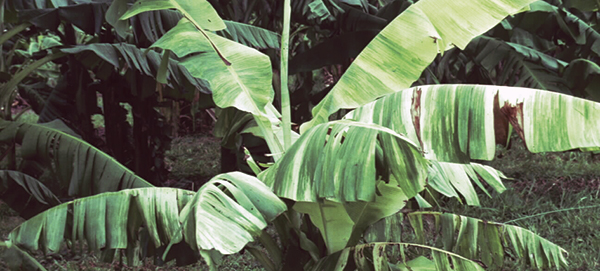
Cause: A genetic abnormality that occurs in tissue-cultured plants.
Solution: Destroy affected plants and set additional following suckers on neighbouring plants.
Zinc deficiency
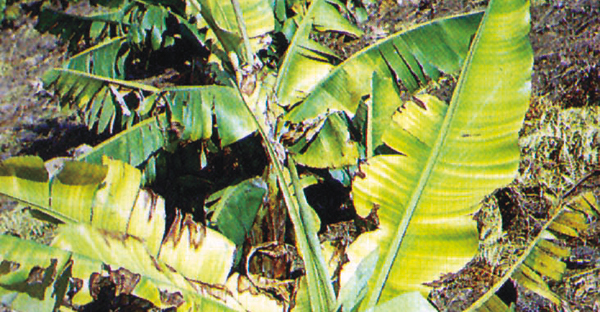
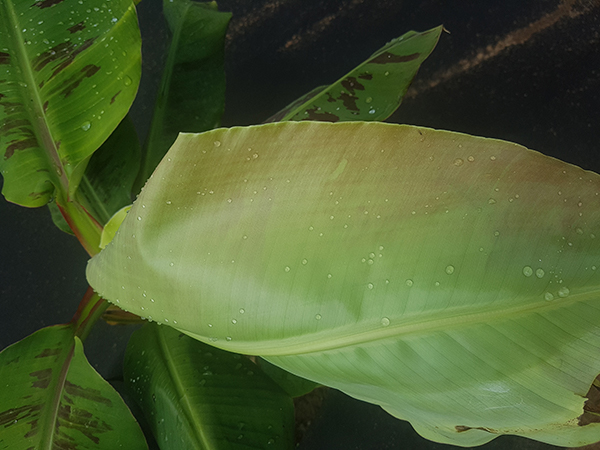
Cause: Insufficient zinc available to the plant.
Solution: First confirm the diagnosis with a leaf analysis test. Apply zinc fertiliser at the rate recommended on your analysis result.
Colours on leaves
Posted on by Better Bananas
Colours on leaves
Juvenile plants (red-purple blotches on leaves)
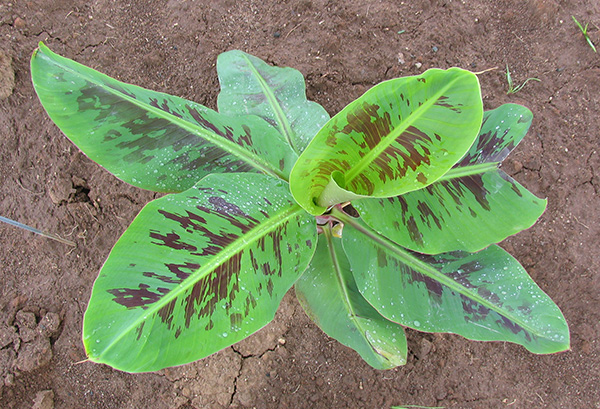
Cause: The juvenile stage of young Cavendish bananas and some other varieties usually has red-purple blotches on the leaves. This is normal.
Solution: No control is needed and plants grow out of this symptom.
Mite damage (bronzed leaves)
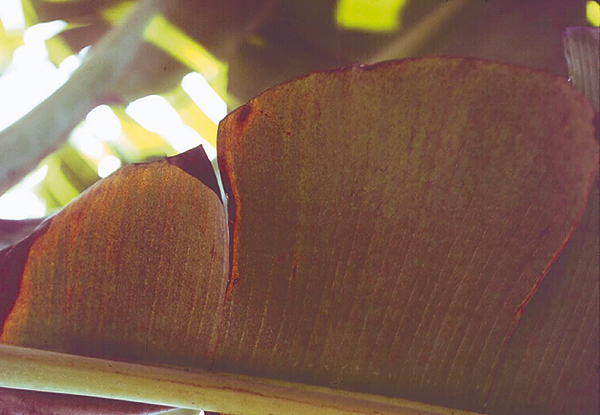
Cause: Feeding on the banana spider mite, Tetranychus lambi, or the two-spotted mite, Tetranychus urticae, on the underside of leaves.
Solution: Treatment is usually not necessary because predatory beetles Stethorus spp. maintain adequate natural control. If these beetles are not present, and monitoring results show the level of damage is severe, treat with an appropriate miticide. Ensure adequate coverage to the underside of leaves.
More info:
Better Bananas – Mite summary
Queensland Department of Primary Industries
Plant Health Australia
Sooty mould (blackened leaves)
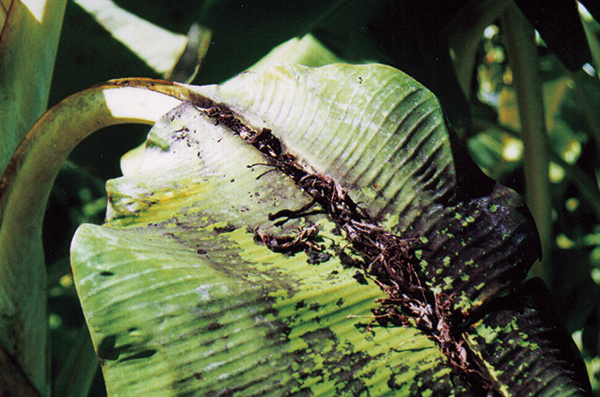
Cause: A fungus growing on the honeydew secretions produced by insects such as aphids, scales and bugs.
Solution: Natural control by parasites and predators usually provides adequate control of these pests. Chemical sprays specifically to reduce insects which promote honeydew and sooty mould are seldom required.
More info:

